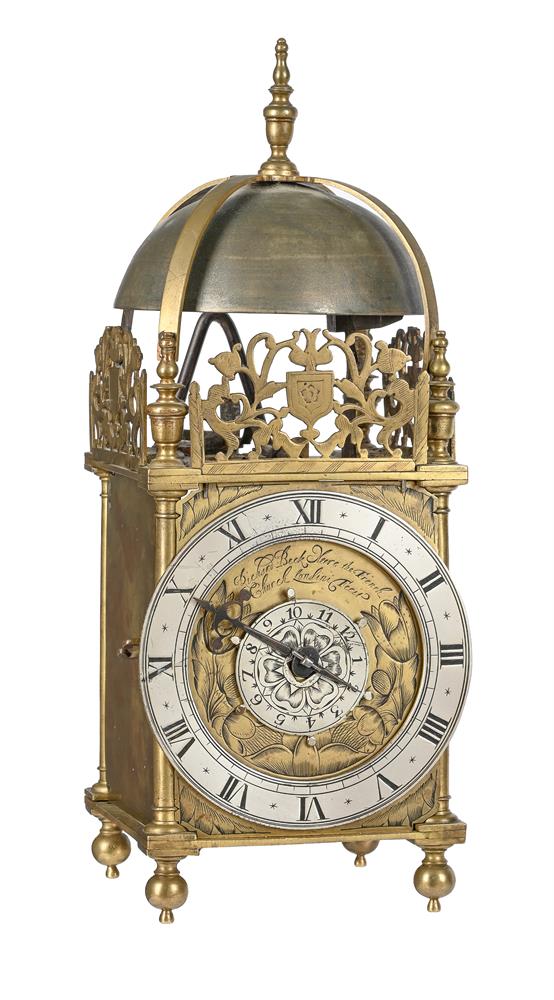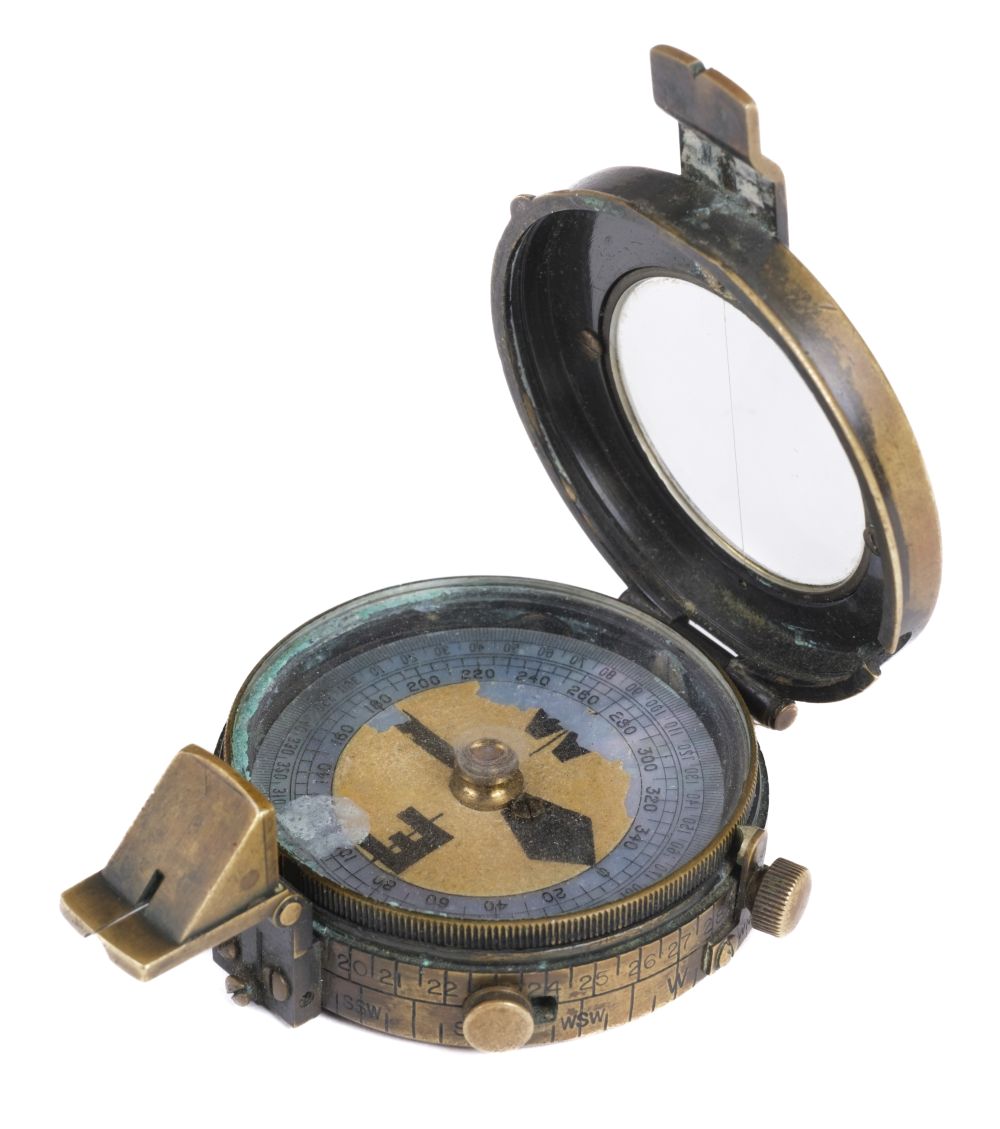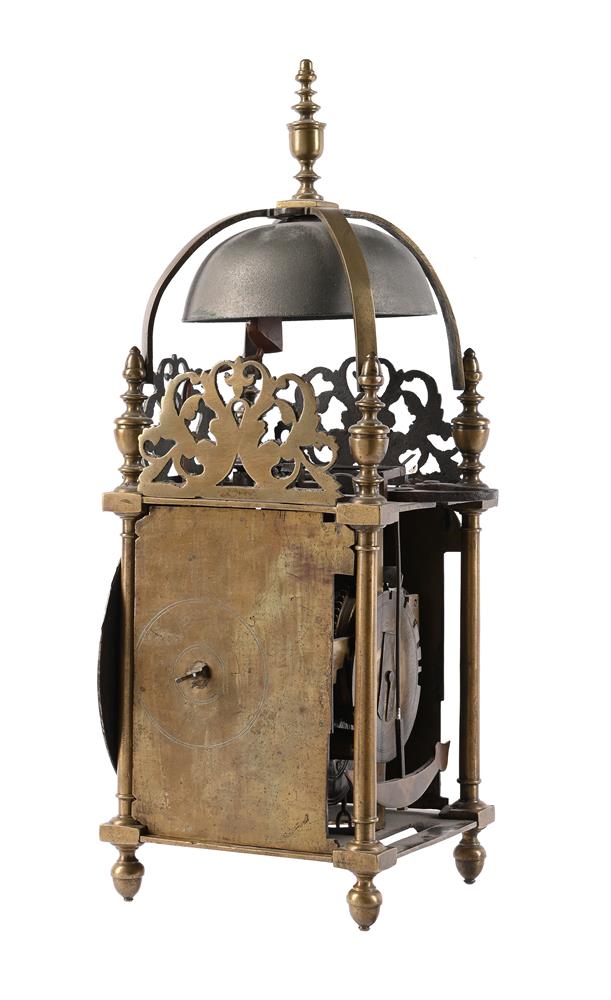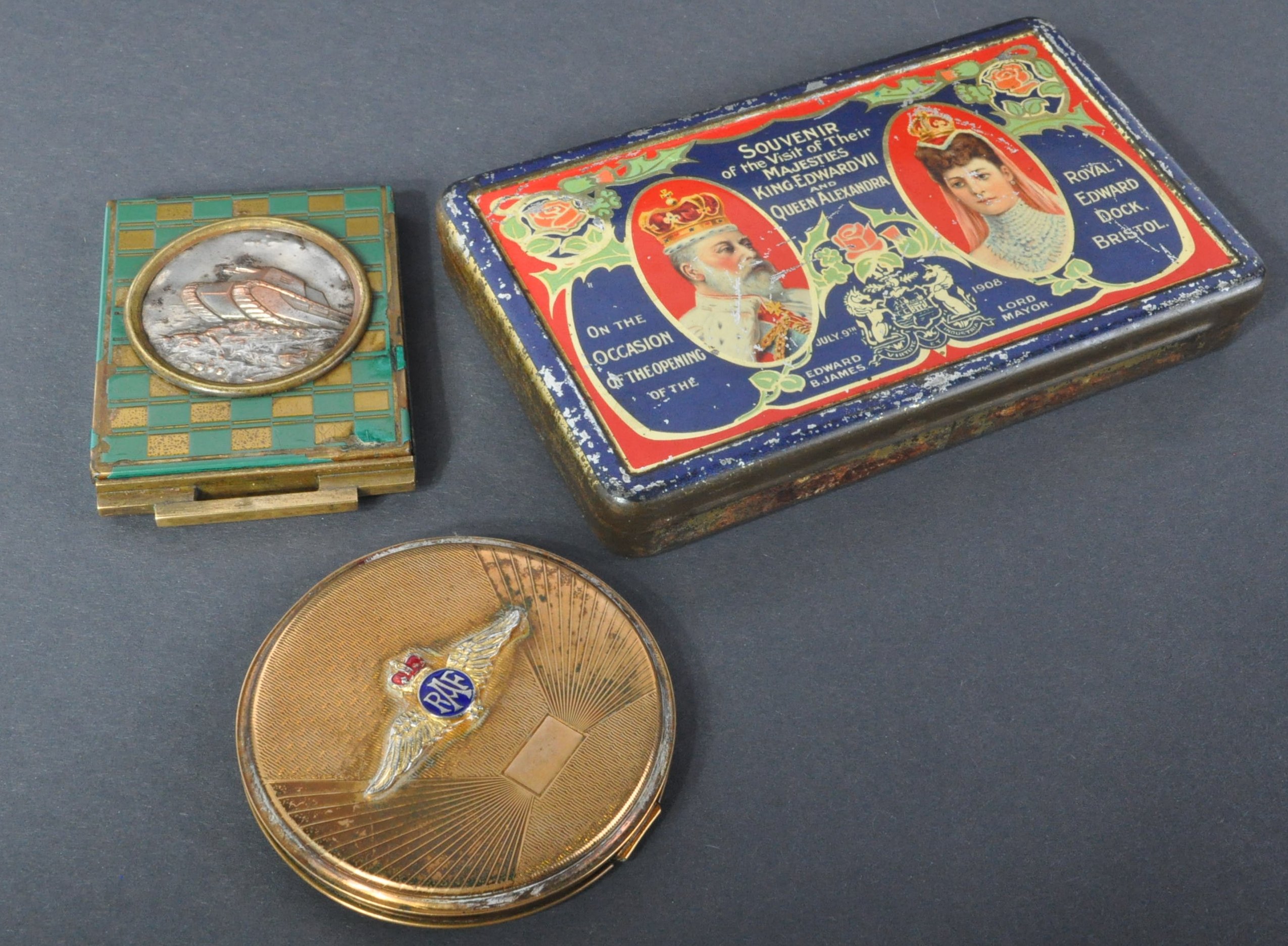A second period brass lantern clock with later spring movement The front fret signed for William Selwood, London, circa 1640, the movement late 19 th century Now with four pillar single fusee movement with anchor escapement regulated by a short lenticular bob pendulum and passing strike sounding on the original bell above, the dial engraved with central flowerhead enveloped by stylised leafy floral sprays issuing from another flowerhead positioned just above six o'clock and incorporating large blooms to upper and lower margins, with original iron hour hand and later minute hand carefully made to match within applied narrow silvered Roman numeral chapter ring with stylised wheatear hour markers and engraved leafy infill to angles, the standard London second period 'Lothbury' frame with column turned corner posts beneath engraved foliate scroll pierced shield centred stapwork fret signed William sellwood at y e Mermayd in Lothbury to lower edge and plain side frets, vase turned finials and domed bell bearer above, the sides with hinged brass doors, on turned ball feet, 38cm (15ins) high. William Selwood was born in Abingdon in Berkshire in 1607 and is recorded as a Free Brother in the Clockmakers' Company in 1633 until his death in 1653. He trained under Henry Stevens from 1624 to 1632, and worked at the Mermaid in Lothbury till his death in 1653. Selwood was succeeded by his is former pupil, Thomas Loomes, who married Mary, the daughter of Ahasuerus Fromanteel in 1654. A clock by Selwood with related dial engraving to the current lot (albeit around an alarm disc) is illustrated in White, George English Lantern Clocks on page 134 (figure III/14). White also illustrates two further dials by Henry Ireland and Thomas Knifton (both of whom were apprenticed to William Selwood) which also exhibit very similar engraving (figures III/15 and III/14 respectively). The design of fret used on the present clock is of the earlier 'strapwork' type (which was generally phased-out during the 1650's in favour of the later 'foliate' pattern - see White page 144), whilst the frame castings are of typical second period 'Lothbury' pattern which were mainly in use up until around 1660 (see lot 154). These details reflect the fact that by the 1650's Lothbury had become a hub for the horological trade mainly due to the abundant supply of brass and iron from nearby foundries. The efficient supply of raw castings lead to the emergence of a degree of standardisation (assisted by many workshops having shared roots) with regards to frame patterns, dial engraving and fret design. During the latter part of the 19 th century the re-purposing of historic objects became fashionable in order to create interiors which had an authentic feel of antiquity. Regrettably this fashion meant that many items (particularly furniture) were altered in form and/or had decorative elements added. At this time many original lantern clock survivors were converted from weight-driven to spring movements in order that they can rest on a table or mantelpiece, indeed they became so popular as decorative objects that reproductions began to be made. The current lot was converted at this time however the all of the original frame elements were retained as well as the hour hand hence the original appearance of the clock has been largely preserved and it has good rich patination.
A second period brass lantern clock with later spring movement The front fret signed for William Selwood, London, circa 1640, the movement late 19 th century Now with four pillar single fusee movement with anchor escapement regulated by a short lenticular bob pendulum and passing strike sounding on the original bell above, the dial engraved with central flowerhead enveloped by stylised leafy floral sprays issuing from another flowerhead positioned just above six o'clock and incorporating large blooms to upper and lower margins, with original iron hour hand and later minute hand carefully made to match within applied narrow silvered Roman numeral chapter ring with stylised wheatear hour markers and engraved leafy infill to angles, the standard London second period 'Lothbury' frame with column turned corner posts beneath engraved foliate scroll pierced shield centred stapwork fret signed William sellwood at y e Mermayd in Lothbury to lower edge and plain side frets, vase turned finials and domed bell bearer above, the sides with hinged brass doors, on turned ball feet, 38cm (15ins) high. William Selwood was born in Abingdon in Berkshire in 1607 and is recorded as a Free Brother in the Clockmakers' Company in 1633 until his death in 1653. He trained under Henry Stevens from 1624 to 1632, and worked at the Mermaid in Lothbury till his death in 1653. Selwood was succeeded by his is former pupil, Thomas Loomes, who married Mary, the daughter of Ahasuerus Fromanteel in 1654. A clock by Selwood with related dial engraving to the current lot (albeit around an alarm disc) is illustrated in White, George English Lantern Clocks on page 134 (figure III/14). White also illustrates two further dials by Henry Ireland and Thomas Knifton (both of whom were apprenticed to William Selwood) which also exhibit very similar engraving (figures III/15 and III/14 respectively). The design of fret used on the present clock is of the earlier 'strapwork' type (which was generally phased-out during the 1650's in favour of the later 'foliate' pattern - see White page 144), whilst the frame castings are of typical second period 'Lothbury' pattern which were mainly in use up until around 1660 (see lot 154). These details reflect the fact that by the 1650's Lothbury had become a hub for the horological trade mainly due to the abundant supply of brass and iron from nearby foundries. The efficient supply of raw castings lead to the emergence of a degree of standardisation (assisted by many workshops having shared roots) with regards to frame patterns, dial engraving and fret design. During the latter part of the 19 th century the re-purposing of historic objects became fashionable in order to create interiors which had an authentic feel of antiquity. Regrettably this fashion meant that many items (particularly furniture) were altered in form and/or had decorative elements added. At this time many original lantern clock survivors were converted from weight-driven to spring movements in order that they can rest on a table or mantelpiece, indeed they became so popular as decorative objects that reproductions began to be made. The current lot was converted at this time however the all of the original frame elements were retained as well as the hour hand hence the original appearance of the clock has been largely preserved and it has good rich patination.















Testen Sie LotSearch und seine Premium-Features 7 Tage - ohne Kosten!
Lassen Sie sich automatisch über neue Objekte in kommenden Auktionen benachrichtigen.
Suchauftrag anlegen